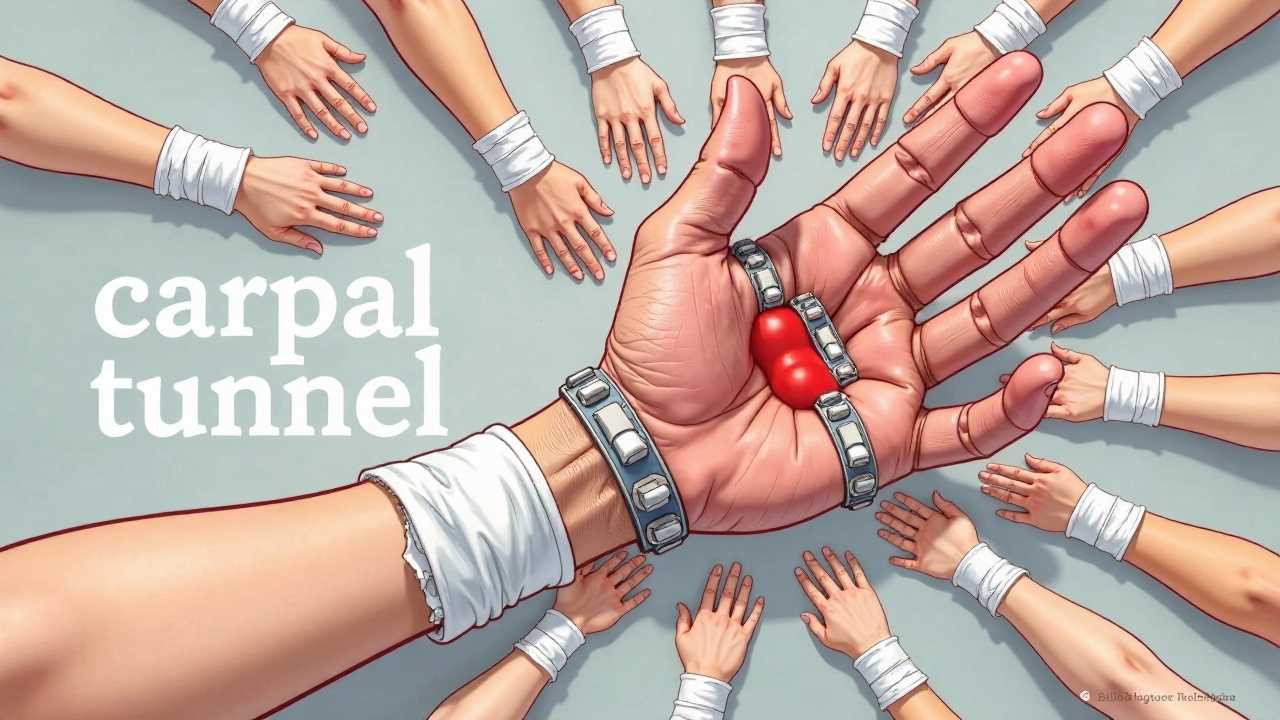
Understanding Carpal Tunnel Syndrome
Carpal Tunnel Syndrome (CTS) is a condition that affects millions of individuals worldwide, leading to discomfort, pain, and reduced functionality in the hands and wrists. This syndrome occurs when the median nerve, which runs through the wrist, becomes compressed within the carpal tunnel. Symptoms often include tingling, numbness, and weakness in the hand, making daily tasks challenging. Recognizing the symptoms early and seeking appropriate Carpal Tunnel Solutions is vital for effective management and recovery.
Orthopedic Braces: A First Line of Defense
One of the most effective Carpal Tunnel Solutions is the use of orthopedic braces. These braces are designed to immobilize the wrist, preventing movements that may exacerbate symptoms. By keeping the wrist in a neutral position, orthopedic braces reduce pressure on the median nerve, allowing for healing and relief from pain.
There are various types of braces available, including:
- Wrist Splints: These are commonly used at night to prevent wrist flexion, which can worsen symptoms during sleep.
- Custom-Made Braces: For those with severe symptoms, custom braces can be tailored to fit the individual's wrist perfectly, providing optimal support.
Wearing an orthopedic brace consistently can significantly improve symptoms and is often recommended as a first step in treatment.
Nerve Decompression: A Surgical Solution
For individuals who do not respond to conservative treatments, nerve decompression surgery may be necessary. This procedure involves cutting the ligament that is pressing on the median nerve, thereby relieving the pressure.
Nerve decompression is typically performed as an outpatient procedure, and many patients experience immediate relief from symptoms. Post-surgery, it is essential to follow a rehabilitation program to regain strength and mobility in the wrist and hand.
Wrist Support: Importance in Daily Activities
Incorporating wrist support into daily activities can be a game-changer for individuals suffering from CTS. Simple adjustments, such as using ergonomic tools and maintaining proper wrist positioning while typing or using a mouse, can prevent further strain on the wrist.
Using wrist supports during activities that require repetitive wrist movements can also help mitigate symptoms. Options include:
- Ergonomic Mouse Pads: These provide cushioning and support to the wrist, reducing strain during prolonged computer use.
- Wrist Cushions: These can be used while typing to maintain a neutral wrist position.
Investing in quality wrist support can lead to significant improvements in comfort and functionality.
Ergonomic Therapy: A Holistic Approach
Ergonomic therapy focuses on modifying the workplace and daily activities to reduce strain on the body. This approach is particularly beneficial for individuals with CTS, as it addresses the root causes of the condition.
Key components of ergonomic therapy include:
- Workstation Assessment: Evaluating the setup of your workspace to ensure that it promotes proper posture and minimizes strain on the wrists.
- Adjustable Furniture: Utilizing desks and chairs that can be adjusted to fit your body, allowing for a more comfortable working position.
- Regular Breaks: Incorporating short breaks into your routine to stretch and rest your wrists can prevent symptoms from worsening.
By adopting ergonomic practices, individuals can significantly reduce the risk of developing or exacerbating Carpal Tunnel Syndrome.
Rehabilitation Exercises: Strengthening and Recovery
Engaging in rehabilitation exercises is a crucial aspect of any comprehensive treatment plan for Carpal Tunnel Syndrome. These exercises are designed to strengthen the muscles in the hands and wrists, improve flexibility, and promote healing.
Some effective rehabilitation exercises include:
- Wrist Flexor Stretch: Extend one arm in front of you with the palm facing up. Use the other hand to gently pull back on the fingers, stretching the wrist flexors.
- Wrist Extensor Stretch: Extend one arm with the palm facing down. Use the other hand to gently pull back on the fingers, stretching the wrist extensors.
- Tendon Gliding Exercises: These involve moving the fingers through various positions to promote mobility and reduce stiffness.
Performing these exercises regularly can aid in recovery and help prevent future episodes of CTS.
Combining Treatments for Optimal Results
For many individuals, a combination of treatments yields the best results. Utilizing orthopedic braces alongside ergonomic therapy and rehabilitation exercises can create a comprehensive approach to managing Carpal Tunnel Syndrome.
In cases where conservative treatments are insufficient, surgical options such as nerve decompression may be considered. Consulting with a healthcare professional specializing in hand therapy can help determine the most appropriate course of action based on individual needs.
Taking Control of Your Health
Carpal Tunnel Syndrome can be a debilitating condition, but with the right Carpal Tunnel Solutions, individuals can regain control over their health and well-being. By exploring options such as orthopedic braces, nerve decompression, wrist support, ergonomic therapy, and rehabilitation exercises, it is possible to alleviate symptoms and improve quality of life.
Taking proactive steps towards treatment and prevention is essential in managing this condition effectively. Whether through lifestyle adjustments or medical interventions, there is hope for those affected by Carpal Tunnel Syndrome.
 Mobility trainingHome Fitness RecoverySports Injury PreventionPersonal Physical TherapyOrthopedic SolutionsPrivacy PolicyTerms And Conditions
Mobility trainingHome Fitness RecoverySports Injury PreventionPersonal Physical TherapyOrthopedic SolutionsPrivacy PolicyTerms And Conditions
